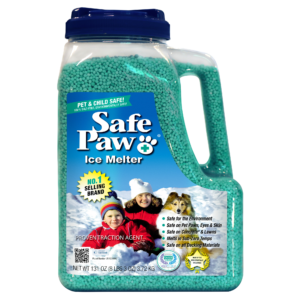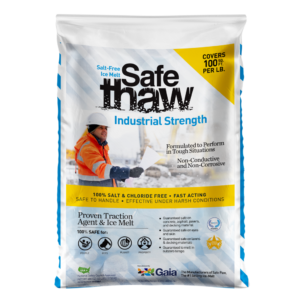Walk On Ice vs Rock Salt vs Sand

During the winter, walking around your premises or parking areas requires extra caution. Slips and falls are among the most common types of injuries during the winter season.
When strolling outside in the winter, you will come across some slick places. Even though snow is removed from there regularly. Everyone should be aware of these dangers at all times and understand how to walk safely on ice and slippery surfaces. You also need to understand when is ice safe to walk on and how much ice is safe to walk on? Once you know about this, the next step is to walk on ice without slipping.
When Is Ice Safe To Walk On?
Ice strength is determined by many factors, such as age, distance to shore, river outlets and inlets, obstructions like rocks, trees, and plants, and water currents. The clear blue ice is the most stable.
Blue ice is twice as strong as white opaque or snow ice. Wet snow freezes on the ice, forming an opaque colored surface. Grey ice is dangerous. For walking or skating alone, the minimum ice thickness should be 15 cm. Snowmobiles require a depth of 25 cm.
Three Different Types Of Traction Agents
1. Walk On Ice
Walk on Ice complies with the US Occupational Safety and Health Administration’s strict criteria. A non-melt product like Walk on Ice has the advantage of providing quick traction. Its tiny spiky granules bite through the ice’s surface while absorbers soak up the surface water that causes ice to be slick. Walk on ice is made of micronutrients. They allow the product to be swept into the lawn or garden for greener grass and a lush garden in the spring.
When you spread Walk on Ice, you instantly have a safe walking surface. It also outperforms rock salt and traditional ice melt because it is safe for people, pets, and the environment, as evidenced by OSHA compliance. It works well in all temperatures.
2. Kitty Litter
Kitty litter does not contain rock salt. People are opting for it because they are less hazardous than other chemicals. It doesn’t burn pet paws or people’s skin, and it doesn’t pollute the environment because it isn’t a regular ice melt.
It’s clay, and when you get it, it turns into a paste. You’re going to have a hard time getting rid of it. Throughout the winter, you’ll track grey sludge inside your home. When it becomes wet, it becomes slick and sticky at the same time.
3. Sand
Sand is cheap, easy to find, and may be used in driveways or roadways, although it doesn’t melt ice. Sand not only absorbs sunlight, assisting in the melting of snow and ice, but it also provides traction, preventing your friends and family from slipping and falling.
Its disadvantage is that it needs to be taken care of as soon as it has served its purpose, or it may block your drains and even leave your garden sandy.
Conclusion
Winters can be a lot of fun if you have the right product to take care of your winter anxiety. Hence, use Walk on Ice for instant footing. This environmentally safe and helpful product is easy to buy and use.
Get ready for winter with Walk On Ice instant traction on snow and ice
Other Ice Melt Products
Safe Paw
The Original and the #1 Pet and Child Safe Ice Melt for over 20 years. Guaranteed environmentally safe – will not harm waterways and sensitive wetlands. Safe Paw can change how winter affects our planet.

Safe Thaw
Imagine an ice melt you can put down and never worry about. It won’t harm pets, kids and your property. That’s Safe Thaw. Unlike anything else on the market, Safe Thaw can change how winter affects our planet.



